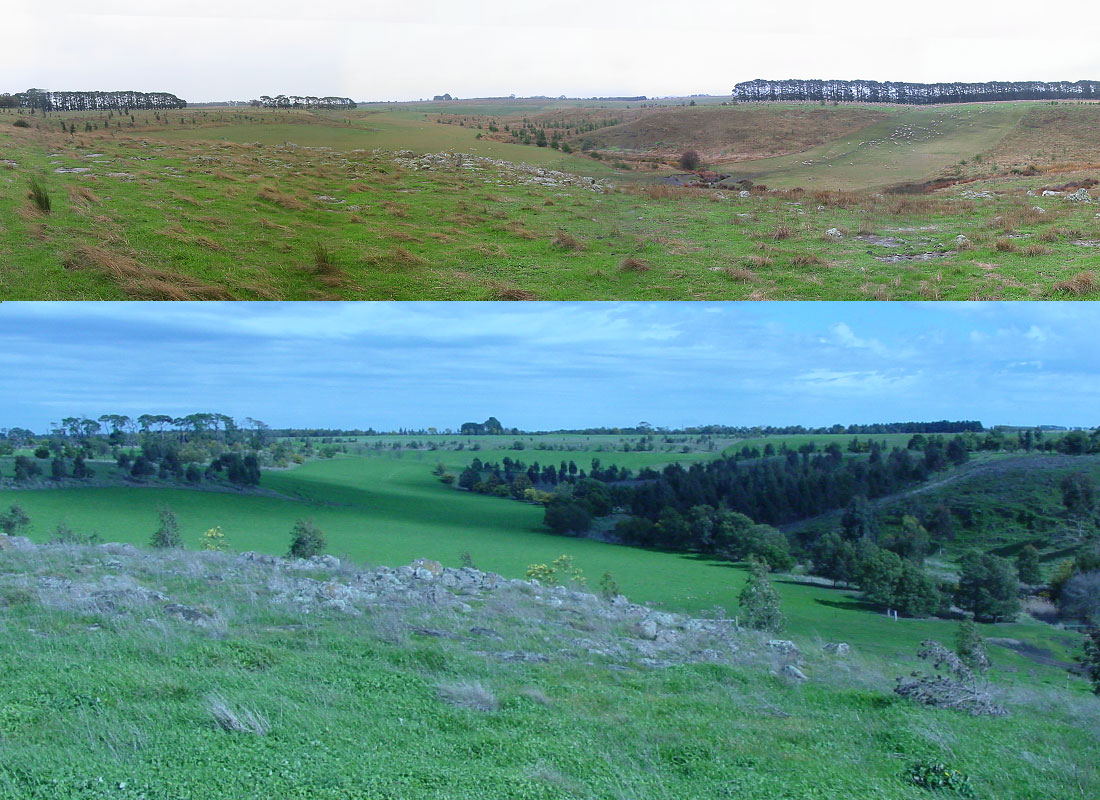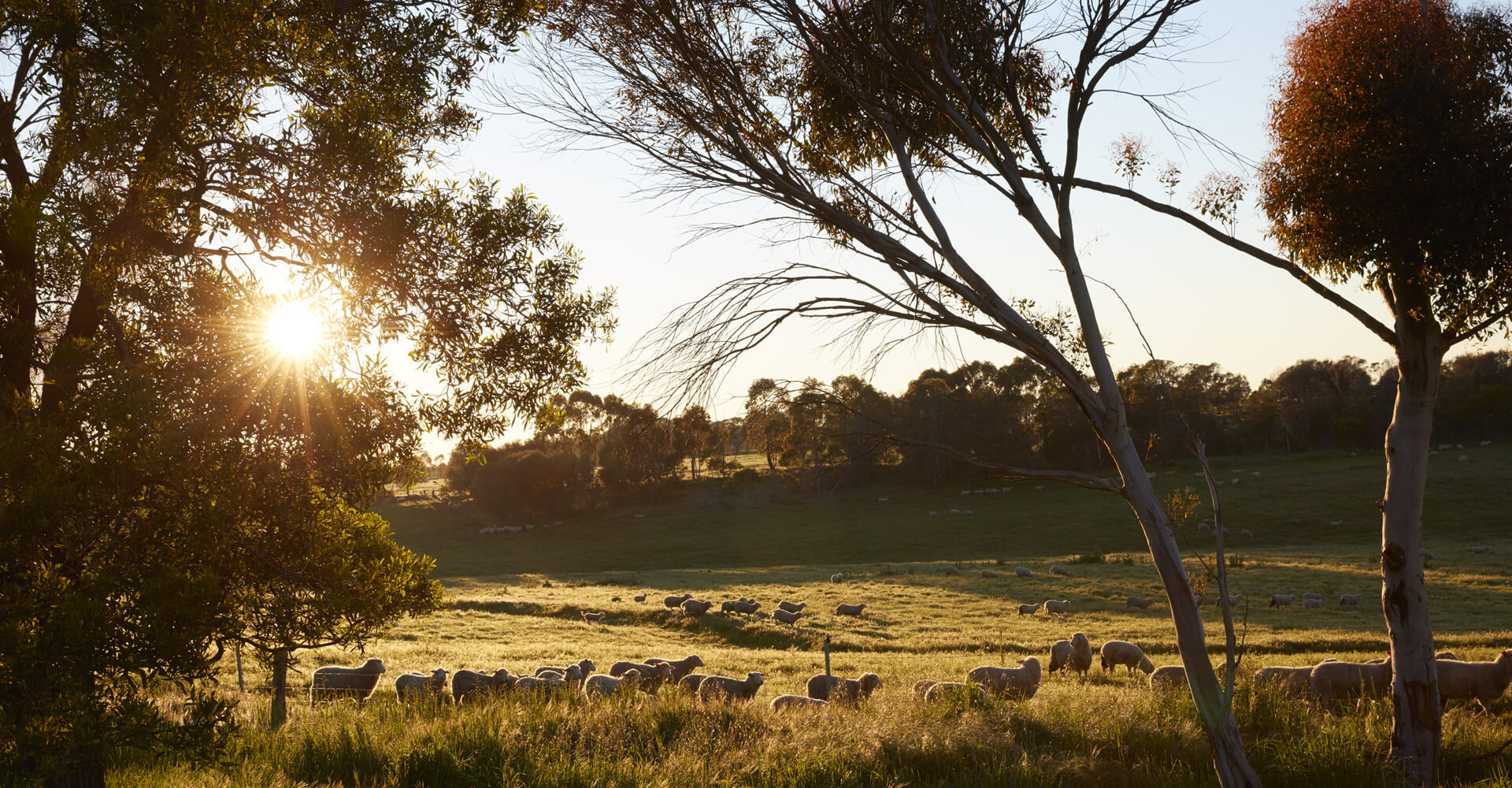
Before & After
While reading Mary Akers history of Narmbool (Hold Fast the Heritage 2010), I was curious to learn the history of our local landscape.
In 1836 Surveyor General, Major Thomas Mitchell wrote: “…these verdant plains, as yet untouched by flock or herds… unencumbered by too much wood, it yet possessed enough for all… vast natural resources of a region more excessive than Great Britain…and which now lies ready for the plough… prepared by the creator for the industrious hands of Englishmen.”
In the 1860s, WJ Reid who lived at Woodbourne, adjoining Cargerie wrote: “Thick bush, so thick that one could not, in parts, lead a horse. The timber consisted of honeysuckle*, stringybark, sheoak and lightwoods.”
The earliest aerial photographs from the 1930s show only evidence of trees along the Leigh river and 1-2 linear plantations of sugar gums (planted after the 1st world war).
In 1924 Sandy’s family purchased “Glenspean” and quickly set out to plant trees, mostly Pines for wind protection.
Native tree plantings were unusual until the 1960s when plant nurseries started growing Australian plants.
Since the early 1980s extensive revegetation of local trees has been part of an annual farm improvement plan.
Some 80,000 plus trees grow today, restoring the landscape, providing habitat for fauna, preventing wind erosion, consuming C02 and protecting waterways and the landscape from a rising water table. Animal welfare and benefits for cropping have also been determined. This week areas have been prepared for more trees. Some 4,000 seedlings will be arriving in August to be planted in their new home. The old argument – “the benefits take too long to achieve” – is misguided. Remember the Meredith Dairy vision; “To Produce Food Sustainably.”
The word sustainability conjures up a sense of permanence and self-sufficiency. Good farming, being financial and socially responsible. Planting natives will enable some restoration of ecosystems and landscapes as seen by Major Mitchell in 1836.


